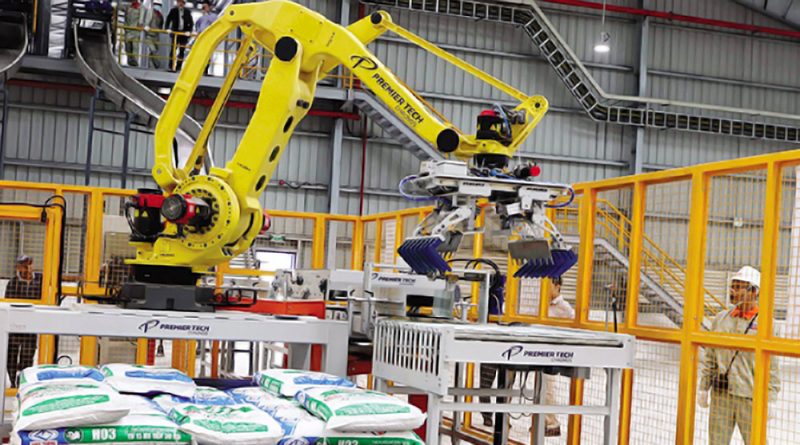Vietnam’s 4.0 ambitions in one hallmark strategy
In order to boost sustainable economic growth, create new jobs, and attract more high-quality investment, Vietnam is mulling over the creation of a hallmark strategy on the Fourth Industrial Revolution with specific targets and action plans.
Assigned by the prime minister and the Ministry of Planning and Investment (MPI), the Central Institute for Economic Management (CIEM) is compiling a draft of the national Fourth Industrial Revolution, with specific targets and action plans currently discussed for ministries, sectors, and agencies. The draft was announced for the first time last week.
One of the strategy’s prime targets is to grab opportunities arising from the revolution, increase the country’s GDP and employment, and attract more high-quality foreign direct investment (FDI).
“According to the strategy, Vietnam stands ready to receive new technologies. It will have to change many types of policies to adapt to Industry 4.0,” said Nguyen Thi Tue Anh, deputy director of the CIEM.
Under a CIEM study on the draft, it is expected that joining Industry 4.0 will help increase Vietnam’s GDP by another $28.5-$62.1 billion, equivalent to a rise of 7-16 per cent, by 2030 as compared to the current time. Besides, per capita GDP will likely climb by an additional $315-640 by 2030 thanks to an increase in labour productivity and employment.
“The benefits for Vietnam will be huge, far higher than the country’s participation in the Comprehensive and Progressive Agreement for Trans-Pacific Partnership (CPTPP), which can give only an additional 1.32 per cent rise to the Vietnamese GDP by 2035, as stated by an MPI report,” said Dang Quang Vinh, vice head of the CIEM’s Board for Business Environment and Competitiveness.
“Besides, Vietnam will be able to generate 1.3-3.1 million new jobs by 2030 under the impacts of Industry 4.0,” said Vinh who is one of the drafters of the strategy. “However, these benefits will become true only when Vietnam has more sturdy policies in favour of people and enterprises.”
The strategy, if medium-level technologies are applied, will likely enable the country to see strong growth in many key economic sectors by 2030, such as manufacturing (16 per cent), wholesale and retail (20 per cent or $9.5 billion), agro-forestry-fishery (12 per cent), supply of electricity, gas, and air conditioning (23 per cent), and finance-banking-insurance (14 per cent or $3.5 billion).
“For example, the manufacturing sector will grow by an additional $7-14 billion through new technology applications, while the sum will be $4.9 billion for the agricultural sector thanks to the saving of costs and improvement of productivity,” Vinh said.
“The communications and industry sector will climb 77 per cent, or an additional $2.5 billion, against the scenario without a strategy,” he added.
According to the CIEM, new industrial sectors resulting from Industry 4.0 “will be the key growth propellants for Vietnam, such as the Internet of Things, media, and digital economy. They will also support other sectors to improve their competitiveness, increase revenue, and develop new products and services.”
The new industrial sectors will include e-commerce ($40 billion in revenue by 2030), artificial intelligence ($420 million), data analysis ($730 million), cloud computing ($2.2 billion), vehicle hailing ($2.2 billion), fintech ($1.5 billion), and smart agriculture ($1.7 billion).
“New policies are quite necessary to attract more high-quality investment into these sectors,” said Vinh. “Currently, Vietnam has great potential to develop its own Industry 4.0. For example, the country is now a big consumer of ICT products and services, with a value of $12.7 billion last year, which is expected to rise to $13.4 billion this year.”
Currently, many nations have been developing their own strategies on the issue, such as China’s Made-in-China 2025, Japan’s “Society 4.0,” and “Japan resuscitation strategy,” Malaysia’s “My-i4.0,” Singapore’s 23 plans on digital transformation, India’s “Smart City Mission” and “Industry 4.0 Centre”, Indonesia’s “Making Indonesia 4.0”, and Thailand’s “Thailand 4.0”.
“Industry 4.0 offers great opportunities to Vietnam. Without it, the country will continue lagging behind other nations,” said a CIEM report on Vietnam and Industry 4.0.
“Taking advantage of Industry 4.0 is the easiest way for Vietnam to turn itself into a modern and affluent nation and develop a modern industry in the shortest period of time. Thus, the country needs to mobilise all necessary resources to implement its Industry 4.0 strategy,” the report stated.
Source: vir.com.vn










